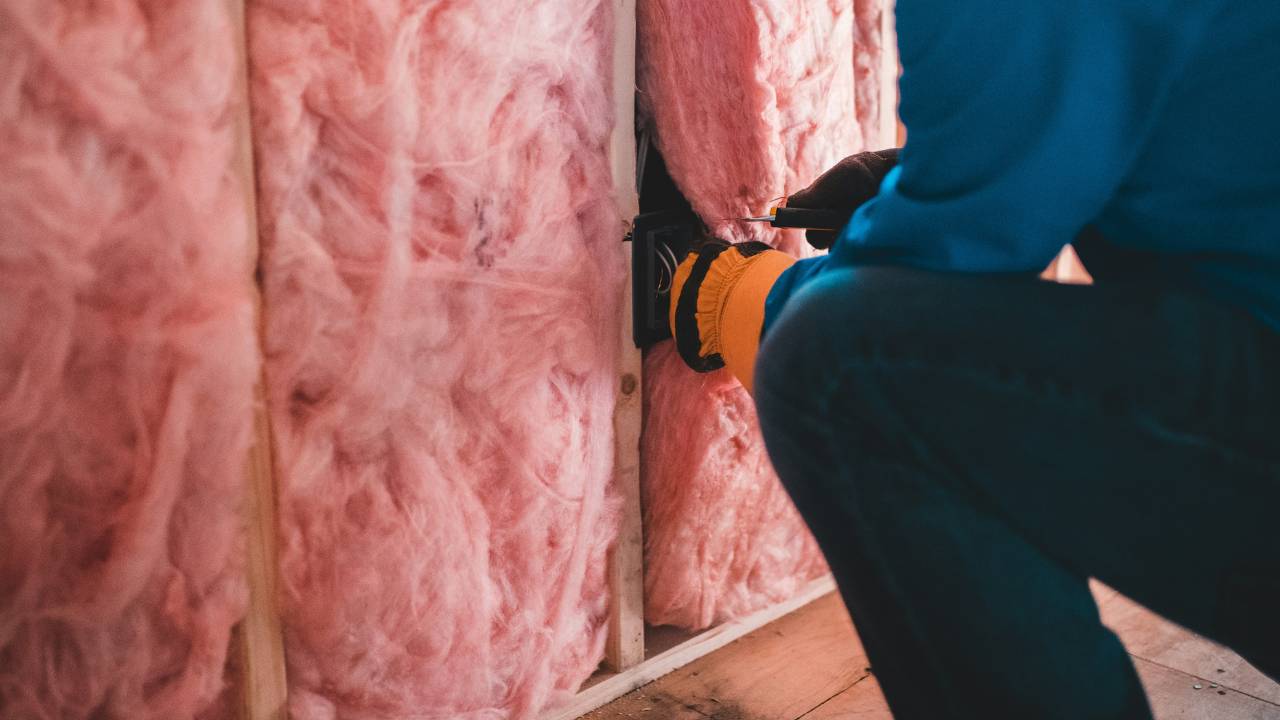
Sustainable business practices are becoming increasingly vital in today’s world, and insulation plays a crucial role in this green movement. By enhancing insulation, you can significantly boost energy efficiency in your business premises, leading to lower energy consumption and reduced environmental impact. These efforts not only contribute to a greener planet but also result in substantial cost savings on your energy bills.
Choosing the right insulation materials and techniques can make a tremendous difference. Whether it’s improving wall insulation or upgrading to double-glazed windows, these investments deliver long-term benefits. Businesses committed to sustainability often see an improved reputation and increased customer loyalty, helping them stand out in a competitive market.
In addition, well-insulated buildings provide a more comfortable environment for employees. This can lead to increased productivity and job satisfaction, which are key components for a thriving business. Embracing these practices positions your company as a leader in sustainability, paving the way for future success and environmental stewardship.
Understanding Insulation and its Impact on Sustainability
Insulation plays a significant role in reducing energy consumption and mitigating climate change. By enhancing thermal efficiency, it directly contributes to lower carbon emissions and promotes sustainable development.
Role of Insulation in Climate Change Mitigation
Insulation acts as a barrier, preventing the loss of heat during winter and entry of heat during summer. This process reduces the need for heating and cooling systems that rely on fossil fuels, thereby lowering greenhouse gas emissions. Proper insulation materials, such as fibreglass, spray foam, and cellulose, can significantly decrease the carbon footprint of buildings.
Enhanced insulation fosters the goals of sustainable development by enabling more energy-efficient living and working environments. In turn, this contributes to prolonged energy resource availability and reduces overall environmental impact. Effective insulation is a simple yet powerful tool for combating climate change.
Thermal Insulation and Energy Savings
Thermal insulation is essential for minimising energy consumption in buildings. By maintaining a stable internal temperature, it diminishes the need for constant heating or cooling. A well-insulated building, like those serviced by Usher Insulations Dublin, can see considerable reductions in energy bills. This not only saves you money but also supports a more sustainable lifestyle.
Energy savings achieved through thermal insulation directly lower your carbon footprint. When you utilise efficient insulation, you reduce the demand for power plants to produce energy, leading to fewer emissions. Effective thermal insulation is a critical step toward achieving energy efficiency and sustainability in your home or workplace.
Environmental Benefits of Insulation Materials

Proper insulation materials can help reduce greenhouse gas emissions and improve energy efficiency, making a significant positive impact on the environment.
Eco-Friendly Insulation Options
Several eco-friendly insulation materials are available to help you create a more sustainable home. Cork insulation is an excellent choice as it is renewable and biodegradable. Cork is harvested from the bark of cork oak trees, which regrow, allowing for sustainable production without harming the trees.
Cotton insulation is another eco-friendly option, often made from recycled denim. It is non-toxic and safe to handle, reducing potential health risks for installers and occupants. Furthermore, it has good thermal performance, helping to maintain consistent indoor temperatures, thereby reducing energy consumption.
Sheep’s wool insulation is naturally fire resistant and can absorb and release moisture without losing its insulation properties. This ability helps control humidity levels, contributing to a healthier indoor environment.
Minimising the Environmental Footprint
By choosing and installing eco-friendly insulation materials, you can significantly reduce your home’s carbon footprint. High-quality insulation reduces the need for heating and cooling, which lowers energy consumption and, consequently, greenhouse gas emissions.
Proper insulation not only enhances energy efficiency but also extends the lifespan of heating and cooling systems by reducing their workload. This reduction in demand leads to less frequent replacements and repairs, further decreasing environmental impact through reduced waste.
Additionally, selecting materials like cork and cotton, which are recyclable and decompose naturally, minimises landfill waste. Investing in sustainable insulation options ensures that you support a healthier planet, both by reducing your energy use and by choosing products with lower environmental impacts.
Sustainable Practices in the Construction Sector
Building sustainably means using materials and methods that are kinder to the environment. This includes adopting green construction techniques and incorporating recycled materials to reduce waste and conserve resources.
Green Construction Techniques
Green construction techniques focus on energy efficiency, waste reduction, and using sustainable resources. For example, installing solar panels on buildings can dramatically reduce energy consumption. These panels harness the sun’s power, providing a renewable energy source.
Energy-efficient windows and insulation also play crucial roles. They keep buildings warm in winter and cool in summer, thereby reducing the need for artificial heating and cooling.
Water conservation is another key aspect. Using low-flow plumbing fixtures and rainwater harvesting systems helps minimise water usage. Selecting local and sustainable materials reduces the carbon footprint associated with transportation.
Utilisation of Recycled Materials
The use of recycled materials in construction is vital. Recycled steel is one such material that offers significant benefits. It reduces the need for mining new ore, thus conserving natural resources and decreasing pollution.
Reclaimed wood is another excellent choice. It gives older materials new life, often with unique character and history, which can add aesthetic value to new constructions.
Incorporating recycled concrete can also be beneficial. This material is often used in roadbed foundations and other structural elements, reducing waste from demolished buildings. Utilising these materials helps reduce the overall carbon footprint of the construction industry while promoting sustainability and responsible resource management.
Innovative Approaches to Energy Efficiency
Energy efficiency is essential for sustainable business practices. By leveraging renewable energy and smart engineering solutions, you can significantly reduce energy consumption and improve overall sustainability.
Harnessing Renewable Energy
Adopting renewable energy sources like solar panels is a vital step. Solar panels capture sunlight and convert it into electricity, providing a clean energy solution. By installing these panels on your business’ premises, you can generate a significant portion of your energy needs without relying on fossil fuels.
Incorporating natural ventilation systems into building designs is another innovative approach. These systems utilise natural airflows to reduce the need for mechanical cooling and heating. Engineering solutions such as strategically placed windows and vents can optimise this process, ensuring a comfortable environment while conserving energy.
Energy conservation can’t be overlooked. Regular energy audits can identify inefficiencies, and implementing measures such as LED lighting and energy-efficient appliances can make a substantial difference. Investing in technology that monitors and manages energy use in real-time can also enhance energy efficiency, leading to cost savings and a smaller carbon footprint.
Sustainable Business Goals and Stakeholder Engagement

A company championing sustainability must align its goals with stakeholders’ expectations, ensuring profitability while embracing Environmental, Social, and Governance (ESG) criteria. Effective collaboration builds a pathway for future-focused business practices.
Setting and Achieving Sustainability Targets
Establishing sustainability goals involves clear, measurable objectives. These goals are often tied to reducing carbon footprints, conserving resources, and promoting social welfare.
Your business could set targets like reducing emissions by a percentage each year or achieving zero waste to landfill. These targets should be ambitious yet attainable, ensuring they align with your company’s core strategy and add value.
Regularly tracking progress is essential. This may involve detailed reporting, which can help you identify areas for improvement and celebrate milestones. Communicating progress transparently not only maintains accountability but also engages your stakeholders by showing commitment to sustainable practices.
Building Partnerships for a Sustainable Future
Successful sustainability initiatives often rely on strong partnerships. Engaging with other businesses, NGOs, and governments can amplify your efforts and lead to innovative solutions.
Partnerships might involve collaborative projects for renewable energy, sustainable supply chains, or community development initiatives. By sharing resources and expertise, you can achieve far-reaching impacts that would be difficult alone.
Stakeholders, including customers and investors, increasingly value these partnerships. Demonstrating collaborative efforts towards sustainability can enhance your company’s reputation, attract loyal customers, and even drive financial performance. Engaging with diverse stakeholders ensures your sustainability initiatives are relevant and effective, fostering a sense of shared purpose.
Economic Implications of Sustainable Insulation Choices
Sustainable insulation offers significant financial gains while promoting eco-friendly practices. Let’s explore the balance between cost and environmental benefits, as well as how regulations are incentivising sustainable building practices.
Balancing Cost and Environmental Gains
Choosing eco-friendly insulation might seem more expensive initially. Yet, over time, these materials lead to reduced energy bills. Effective insulation lowers the energy needed for heating and cooling, translating to significant savings.
Sustainable materials, such as sheep’s wool or cellulose, often have a longer lifespan. This reduces the need for frequent replacements, cutting long-term costs. Grants and tax incentives are frequently available for installing eco-friendly insulation, further improving successful financial management for households and businesses alike.
Homeowners can achieve notable reductions in energy expenses. In addition to financial gains, opting for sustainable insulation also contributes to environmental conservation, reducing carbon footprints.
Incentivising Sustainable Building Practices
Governments and local authorities in the UK have introduced various initiatives to encourage sustainable building practices. Tax breaks and subsidies are available to those who invest in eco-friendly insulation solutions. These incentives help bridge the initial cost gap.
Energy Performance Certificates (EPCs) play an essential role. Higher ratings often lead to increased property values, making sustainable buildings more attractive to potential buyers.
Businesses can also benefit from enhanced reputations by adopting green practices. This can lead to increased customer loyalty and higher sales. By investing in sustainable insulation, you not only reduce operational costs but also contribute positively to society and the environment.
Reducing Carbon Emissions through Thermal Efficiency
Improving thermal efficiency in buildings can significantly reduce carbon emissions. By enhancing insulation and retrofitting structures, you can achieve substantial energy savings and contribute to environmental sustainability.
Impact of Thermal Properties on Carbon Emissions
Thermal properties of materials directly influence carbon emissions. Insulation with high thermal resistance minimises heat transfer, reducing the need for heating and cooling. Efficient insulation materials help maintain indoor temperatures, leading to less reliance on energy-intensive systems.
You might notice reduced heating costs and a smaller carbon footprint. Using materials such as rigid foam, spray foam, and fibreglass can enhance the thermal efficiency of buildings. Advanced materials, such as aerogels and vacuum-insulated panels, offer even greater efficiency and substantial emissions reductions.
Retrofitting for Enhanced Durability and Less Energy Waste
Retrofitting involves upgrading existing buildings to improve their thermal performance. This not only extends the lifespan of the structure but also reduces energy waste. Techniques include adding insulation to walls, roofs, and floors, and installing energy-efficient windows and doors.
Retrofitting can significantly cut down on your heating and cooling requirements, thereby reducing your overall carbon emissions. It is an effective way to address the current energy crisis by enhancing building performance without the need for new construction.
Moving Forward: Compliance, Innovation, and Sustainable Growth

Ensuring sustainable growth in business often requires careful adherence to regulatory frameworks and leveraging various technological innovations. These strategies help in promoting resource efficiency and combating climate change.
Adhering to Regulatory Frameworks
You need to align your business practices with existing regulations to promote sustainable living. Regulatory frameworks are constantly evolving to address climate change and resource efficiency issues. Staying up-to-date with these regulations is crucial.
Failure to comply can result in hefty fines, legal challenges, and damage to your brand’s reputation. By incorporating these requirements into your operations, you ensure that your business remains competitive and trustworthy. Additionally, many incentives are provided by governments to businesses that meet specific environmental standards, which could be beneficial in terms of both finance and public perception.
Leveraging Technological Innovations
Technological advancements play a significant role in driving sustainable growth. Innovations such as smart insulation materials and energy-efficient systems can drastically reduce energy consumption. This not only cuts costs but also aids in combating climate change.
Investing in creativity in sustainability can yield new methods and products that support a circular economy. Encouraging a culture of innovation within your organisation ensures that you stay ahead in implementing the latest sustainable technologies. Moreover, collaborating with tech firms can provide access to cutting-edge solutions that enhance resource efficiency and reduce environmental impact.
Conclusion
Choosing sustainable business practices can significantly impact your company’s environmental footprint. Among the various strategies, investing in effective insulation solutions stands out.
By integrating these solutions, you can reduce energy consumption. This change not only benefits the planet but also leads to cost savings for your business.
When you prioritise sustainability, customers and stakeholders notice. Implementing insulation solutions showcases your commitment to a greener future.
Consider how insulation affects your building’s efficiency. It keeps energy costs down while maintaining a comfortable interior environment. This dual benefit aligns with both economic and environmental goals.
Remember, every small change contributes to a larger impact. By focusing on sustainable insulation, you not only enhance your building’s performance but also promote a healthier environment. This dedication fosters a positive reputation and encourages others in your industry to follow suit.

